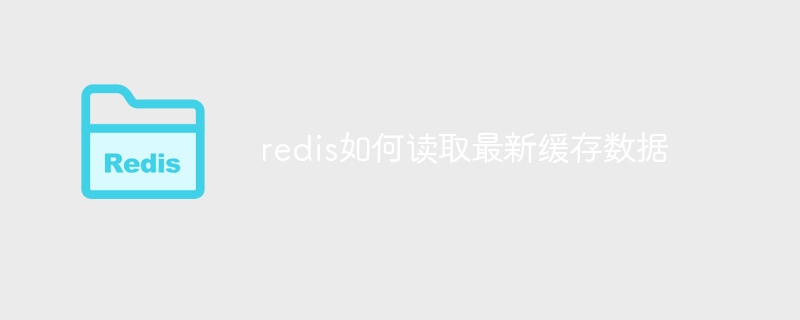You can obtain the latest cached data in Redis through a variety of methods, including GET (get a single key), MGET (get multiple keys), SCAN (iterate all keys), BLPOP/BRPOP (pop one from the list) element) and Pub/Sub (subscribe to the channel and receive notifications). Choosing which method to use depends on your specific needs.

How to read the latest cache data in Redis
Redis provides a variety of mechanisms to read the cache latest data. Here are some methods:
1. GET command
This is the simplest read command used to get the value of a single key from Redis. The syntax is as follows:
<code>GET key</code>
For example:
<code>GET my_key</code>
2. MGET command
This command is used to get the values of multiple keys. The syntax is as follows:
<code>MGET key1 key2 ... keyN</code>
For example:
<code>MGET my_key1 my_key2 my_key3</code>
3. SCAN command
This command is used to iterate all keys in the Redis database. It returns a cursor and a list of key-value pairs. The syntax is as follows:
<code>SCAN cursor [MATCH pattern] [COUNT count]</code>
For example:
<code>SCAN 0</code>
4. BLPOP and BRPOP commands
These commands are used to pop an element from the list and will Blocks until an element is available in the list. The syntax is as follows:
<code>BLPOP key timeout BRPOP key timeout</code>
For example:
<code>BLPOP my_list 0</code>
5. Pub/Sub
#Redis’s Pub/Sub mechanism allows you to subscribe to channels and receive information about new Real-time notifications of data. Here is the command to subscribe to a channel:
<code>SUBSCRIBE channel1 channel2 ... channelN</code>
For example:
<code>SUBSCRIBE my_channel</code>
Then you will receive a message when new data is added to the subscribed channel.
These are the most common methods for reading the latest cached data in Redis. Choosing which method to use depends on your specific needs.
The above is the detailed content of How to read the latest cache data in redis. For more information, please follow other related articles on the PHP Chinese website!
 Commonly used database software
Commonly used database software
 What are the in-memory databases?
What are the in-memory databases?
 Which one has faster reading speed, mongodb or redis?
Which one has faster reading speed, mongodb or redis?
 How to use redis as a cache server
How to use redis as a cache server
 How redis solves data consistency
How redis solves data consistency
 How do mysql and redis ensure double-write consistency?
How do mysql and redis ensure double-write consistency?
 What data does redis cache generally store?
What data does redis cache generally store?
 What are the 8 data types of redis
What are the 8 data types of redis




